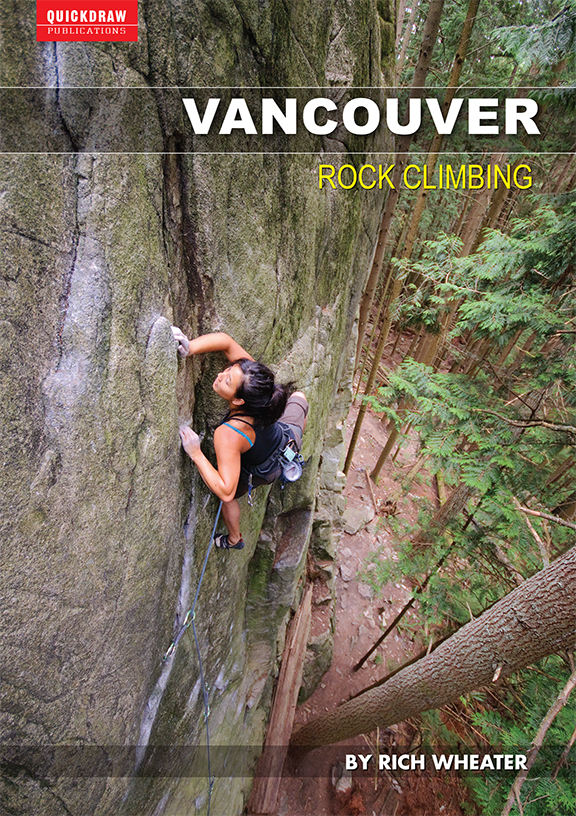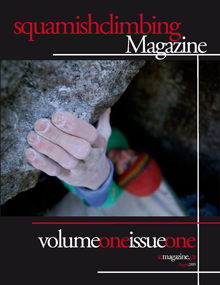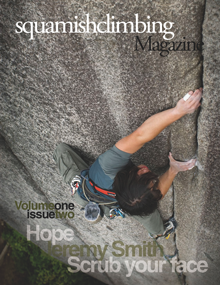The 2016 Vancouver International Mountain Film Festival will be kicking off their Fall Series next week, running November 22nd to the 25th, 2016. We are very excited to announce that local Vancouver climber and photographer, Rich Wheater will be speaking during the Rock Climbing night on Friday, November 25th at Centennial Theatre in North Vancouver. Rich is an active member of our climbing community both as a developer and contributor to a variety of climbing media outlets. He recently became a Director of the Climbers Access Society of BC. We had a chance to catch up with Rich this week and here is what he had to say.
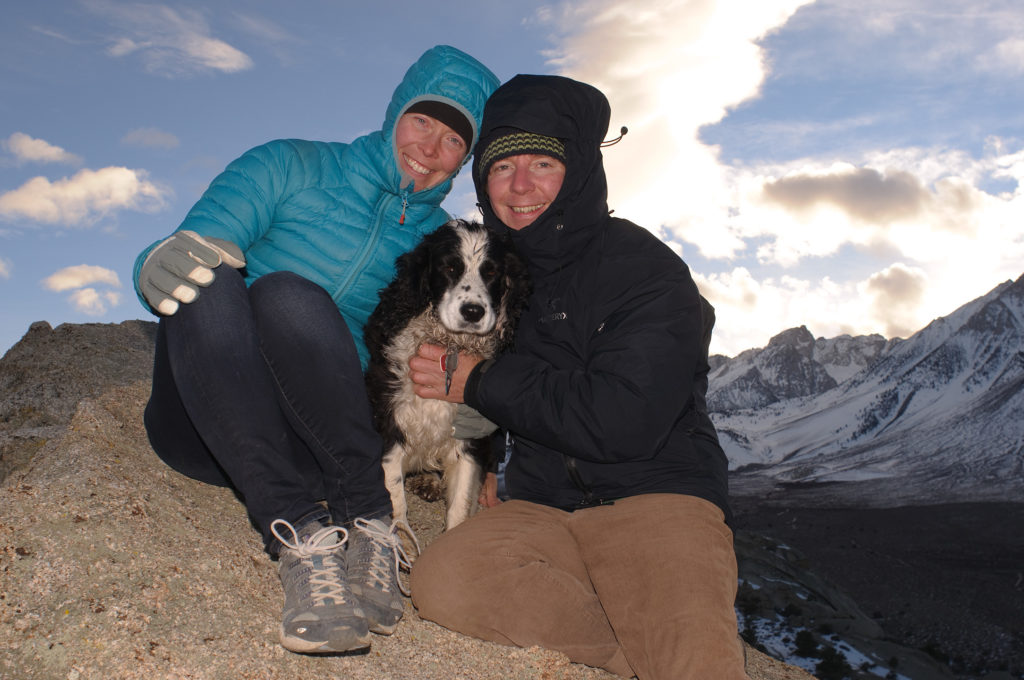
Rich Wheater with his crew Senja and Daisy. Photo courtesy of Rich Wheater ©
Hi Rich, thanks for chatting with us. We are excited about your presentation for the VIMFF Fall series! Can you tell us a bit about what you will be sharing with the community?
Thanks Tim, stoked to be a part of the program. My talk will be about Vancouver area rock climbing – not Squamish, but the North Shore. I spent three years documenting all the climbing sites spread across the North Shore. Much of it was never previously documented so it was quite challenging to weed out details and organize the book, despite how simple it may have initially seemed. During the course of the project, a number of new crags and bouldering areas were developed and the ‘Shore’ experienced a bit of a new routing boom. We also rediscovered and re-cleaned some old climbs that had fallen into obscurity; we removed a lot of cobwebs!
How was the process of documenting the Vancouver area?
For three decades, I’ve been inspired and informed by guidebooks, and I love how they serve as niche-driven history books that record and convey our sport’s unique culture. Without them, the colourful characters, historic photos, and climbing achievements fall into obscurity and the lore isn’t passed on to future generations. Unlike organized team or professional sports with detailed club records and news clippings etc, climbing has historically been a rogue, unsanctioned activity with very little exposure to the mainstream.
After some initial research gathering all the known climbs and areas from journals, word of mouth, hand drawn topos, and lots of internet trolling, I drafted an outline. Pretty quickly, I realized that this was indeed a book waiting to be written by someone. However, once I began visiting the sites and documenting the climbs (climbing the routes, drawing topos, collecting GPS data for trails, mapping boulders, counting bolts, measuring route lengths etc.) I saw that much of what was done needed re-cleaning. There was also a lot of room for more climbing! So ‘documenting the known’ turned into ‘developing the new’ simultaneously.
Was there anything that was unexpected through the process?
For sure. I certainly didn’t expect to develop so many routes at Quarry Rock or the Lynn Boulders, and we definitely didn’t expect to find Tunnel Point, which as you know turned into a really cool crag that serves the Squamish community as much as Vancouver. I didn’t expect Quarry Rock to get closed down, which turned into a frustrating year-long access battle. In general though, I didn’t think I’d end up loving North Shore climbing as much as I do, even though there were times when I was really questioning why I was bothering!
Not to bother because of the effort or the quality?
Well, because Squamish is the obvious elephant in the room just 30 minutes up the road. There’s loads of long routes with pristine rock, whereas a lot of the climbs down here are short and somewhat scruffy. So you occasionally wonder “why am I here doing this, when I could be there doing that!”. But that question easily dissipates when you think about the novel locations, the lack of crowds, and not having to deal with the Sea to Sky highway. Much of the local climbing just needed some love. Once it was spruced up, we had some great climbs to do and unearthing those gems validated the effort. It was very rewarding.
Did you find any hidden gems that had been long forgotten?
I’m still blown away by the diversity of North Shore climbing. The differential experience between climbing at sea cliffs, in creek canyons, the rainforest, or the alpine can make you feel like you’ve toured an entire country’s worth of terrain – it’s so diverse and all the stone is different, too. Regardless of the climbing quality, the scenery encountered at any of these areas is so stunning and unique to what we’re familiar with at Squamish is worth the effort in it’s own right, to me. These climbs aren’t world class by any means, but the situations and micro-environments in which they exist are spectacular and right under our noses.
You and Alex Quiring put a ton of effort into Tunnel Point. Can you tell us the story behind the name of the Apiary and your fight with locals bees?
Pretty simple, when we first started work there we had to beat in a trail, and the ground was full of dead logs, thick dry moss, and Salal – perfect home for ground-wasps. We encountered the same thing draped across the top of the crag, and of course had to physically rip that all away to place anchors. So, on most days we were up there we both got stung multiple times, sometimes 5-6 times in one go if you hit a nest and were hanging on a rope unable to run. That part kind of sucked. An apiary is literally ‘a home of bees; a collection of bee hives’.
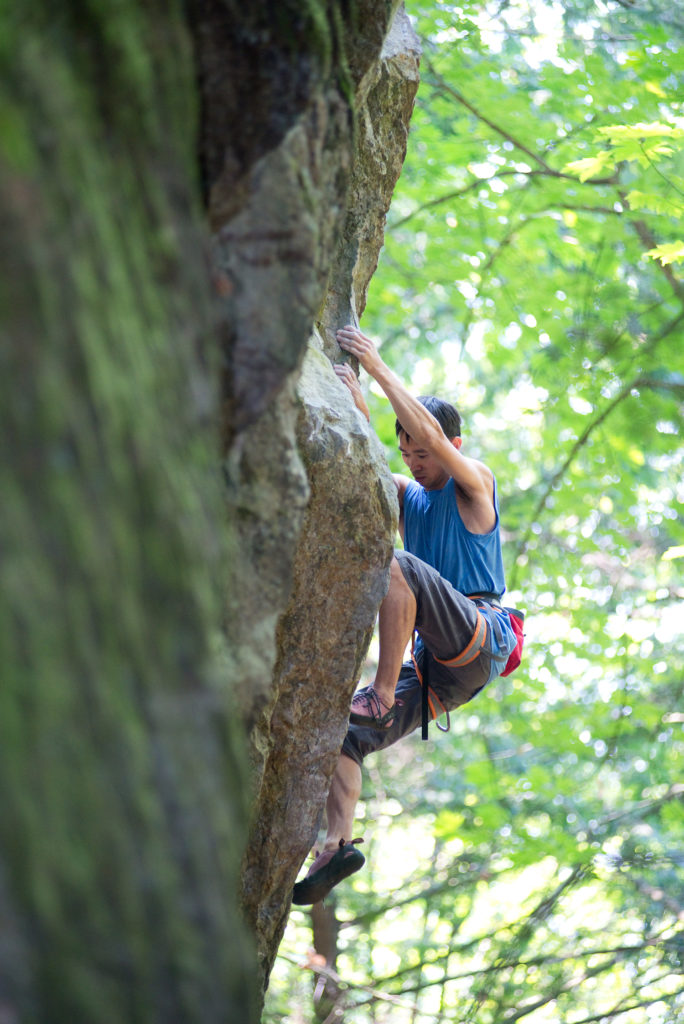
Tony Chan on Dirty Rascals (5.13a). The Apiary, Lions Bay. Photo courtesy of Rich Wheater ©
You have been in the Vancouver climbing community for so long, I want to give a little background to our readers. Can you tell us how you got into climbing and how growing up on the west coast has shaped your experience as a climber?
I first went climbing with the Scouts in 1983. So, thats over thirty years now. It was over a decade before I first visited a climbing gym, but we had a pretty good concrete wall to traverse at the shopping mall in West Van where you’d occasionally run into other climbers. Beyond that, I spent a bunch of time poking around at Lighthouse Park and went to Squamish occasionally, but climbing didn’t become a focus until I began working at The Edge in mid-nineties. I spent three years there full-time and that’s where I met a lot of climbers and really got involved.
I’ve lived in Vancouver ever since my family emigrated from England in 1977 (I was five), and from an early age I was active in the outdoors skiing, hiking, mountain biking, and climbing. The west coast is a unique environment that allows us to explore an amazing variety of lush, technical terrain from the ocean to the alpine, in a relatively mild climate. In Vancouver the mountains are all around and super accessible, so it’s impossible to ignore the draw.
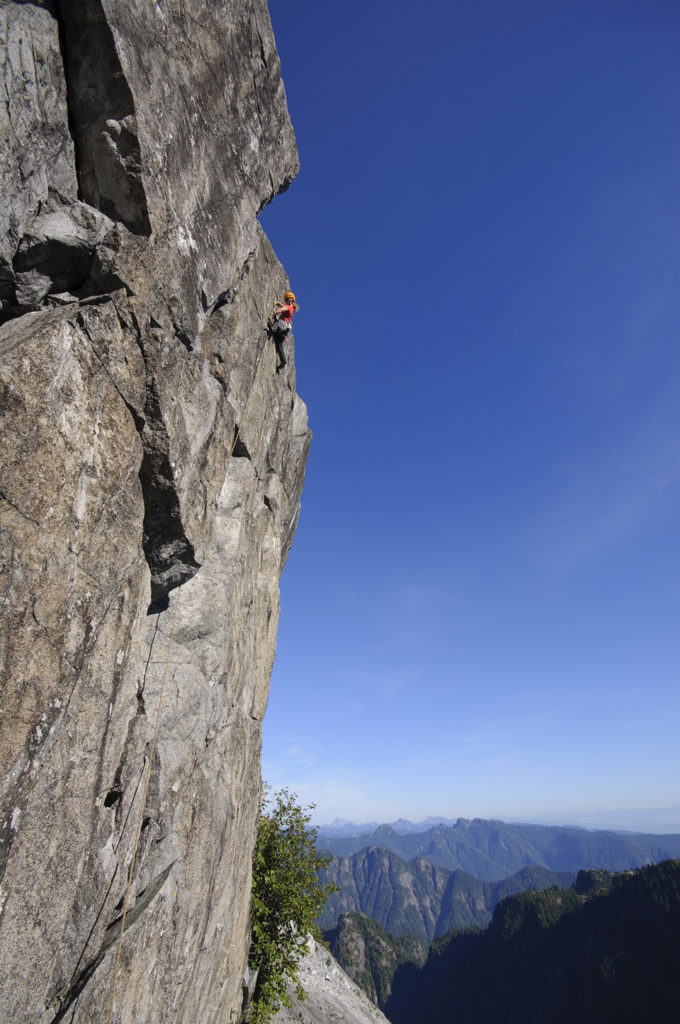
Crown Mountain and The Camel. North Vancouver, British Columbia. Photo courtesy of Rich Wheater ©
You are also a well known photographer throughout the climbing community. Can you tell us a bit about how you got into photography and where it has lead you today?
In 1994, I graduated from the Cap College Outdoor Rec. program and started working full-time at the climbing gym in North Van. To that point, I’d been kind of fascinated with the idea of ‘adventure photography’ and was super inspired by the lives of adventurers like Chris Bonnington and Galen Rowell. I was lucky to spend my college practicum assisting Canadian heroes Pat & Baiba Morrow at their home office in Canmore, and that really got the ball rolling. Through working at the gym I began to meet more climbers who were making noteworthy ascents and who were working for outdoor industry companies, so my connections turned into photo opportunities, and I started shooting guys like Jim Sandford and Marc Bourdon, selling my first decent photos to Metolius and Rock & Ice. From there, I began to road trip a lot and developed a large inventory of photos from all over the States, which helped me become a regular contributor to the climbing industry media. Eventually, I committed to it full-time and began writing to supplement photos. I also cover other sports within the outdoor industry to make it all work professionally. But it’s always been very competitive with relatively little payback (monetarily) so you have to love doing it above all else.
For those budding photographers out there, I would be remiss not to ask about a few of your favourite lenses and how they help you capture the climbing landscape.
I always say the same thing, the best gear is the stuff you have in your bag. Carting camera gear to the cliff is a pain in the ass, and if Im spending my time dedicated to photography, I’m not climbing that day because I’ve chosen to focus on capturing action and light as it unfolds throughout the day. If I’m going climbing, I often don’t bring any camera gear because I really want to climb and photography is a distraction, so both suffer.
I shoot 99% of my climbing photos with a Nikon DSLR, 20-35mm wide angle zoom, and a 80-200 telephoto zoom. I occasionally use a speed light (flash). But if Im trying to go light and be a part of the action whilst shooting, my favourite lenses are a prime (fixed focal length) 20mm, and an 85mm.
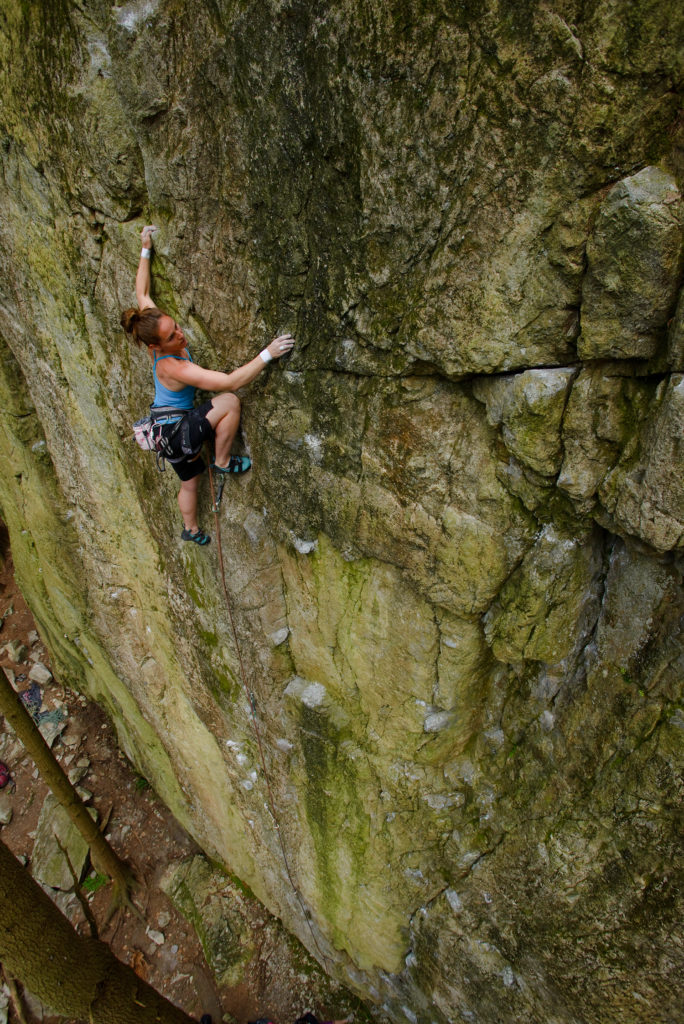
Shannon Sullivan on Hindu Two Routes. Lynn Valley. North Vancouver, BC. Photo courtesy of Rich Wheater ©
You recently had the chance to work with the Big Up Production team on a feature in Squamish. Can you tell us how this experience was new for you?
Big Up and Sender films came to shoot two films in Squamish this past summer, and I was initially asked to help Matt Maddaloni with his cable cam setups. The filmmakers needed a dedicated stills photographer too, so eventually I ended up as rigger, stills guy, and shot a bit of video too. Most of the time I work alone, so this was a super fun experience spending ten days with a team. We were all over the Chief and the whole crew was awesome. We had a great time. It’s neat now to see how the stills photos have been rolling out to support the Reel Rock tour and all the sponsors.
Has the experience shooting video changed your perspective on climbing media at all?
Video production can be an extremely slow and steady process with loads of additional gear. I think I prefer the run & gun nature of shooting stills more, but I love watching climbing films and really appreciate the details that go into a good storyline. The films being produced nowadays are incredible!
Will we see a story in the future told through the lens of Rich Wheater?
I’ll continue publish photos and stories about North Shore climbing as opportunities arise or some new crag-du-jour is too good not to share but you never know what’s next.
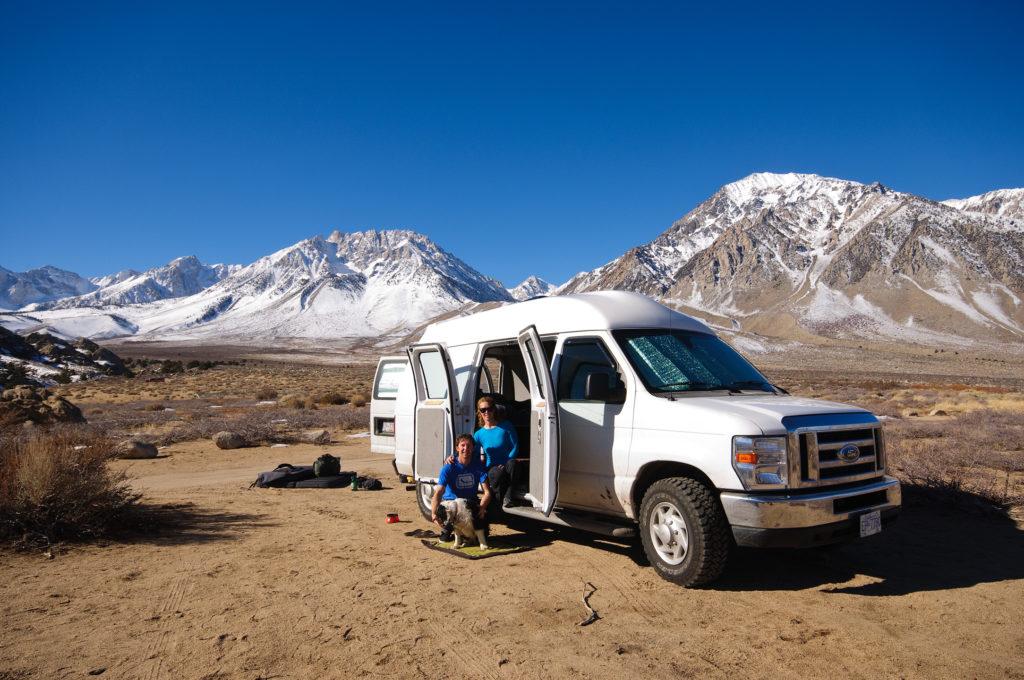
Rich and Senja’s road trip portal. Photo courtesy of Rich Wheater ©
Thanks Rich! Can’t wait for the show! Thanks for all your efforts over the past year with the guidebook and development. The climbing community certainly has benefited from your efforts!
Rich Wheater will be discussing the climbing life and other things Friday, November 25th at Centennial Theatre in North Vancouver. Offer him a beer or two after the show and I am sure he will not disappoint!
